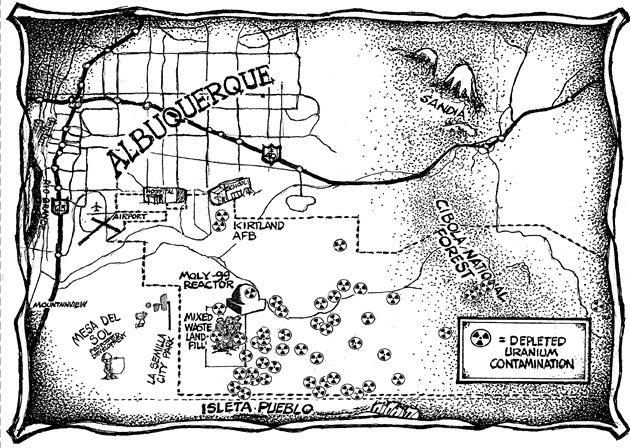
Alliance for Nuclear Accountability (ANA)
The Alliance for Nuclear Accountability (ANA) is one of 39 environmental and peace organizations that won a landmark lawsuit against the U.S Department of Energy for failure to follow-through on adequate environmental cleanup during its 50+ years of nuclear weapons research, testing, and production. Part of this settlement was the establishment of the MTA Fund (Citizens’ Monitoring and Technical Assessment Fund), which provided $6.25 million for tribes and non-profit organizations to assess and conduct independent technical and scientific studies regarding the multitude of technical, ecological, and health issues surrounding the nation’s nuclear weapons complex.
Clark University was chosen by the non-profit peace and environmental groups as the conservator of these reports to ensure they remain available to the public in perpetuity. The unconventional election of university as conservator is an innovative example, particularly within the era of Web 1.0, of higher education as protector and provider of information through wide dissemination.
The research and reports available in this series were conducted by the Alliance for Nuclear Accountability with their allocated portion of the MTA fund.
If you have any questions or concerns please contact us at digitalrepository@clarku.edu.
-

Danger Lurks Below: The Threat to Major Water Supplies from U.S. Department of Energy Nuclear Weapons Plants
Alliance for Nuclear Accountability (ANA) and Radioactive Waste Management Associates
The bulk of the report physically lives with the Alliance for Nuclear Accountability Records, archived in the Swathmore College Peace Collection.
This report details the serious shortfalls of the DOE's cleanup program and shows how hazardous materials are migrating from nuclear weapons sites, placing the environment, water supply systems and significant numbers of people at risk. ANA, founded in 1987, is a national network of organizations that represents the concerns of communities near US nuclear weapons factories. It develops educational materials and advocates for safe solutions for the cleanup of the DOE nuclear weapons complex. We focus on the 13 largest DOE sites; however, it must be noted that many smaller DOE sites also need cleanup.
The report is laid out as follows:
Table of Contents & Preface
Executive Summary
Technical Background
1. Hydrogeology, Aguifers, & Geology
2. Health Effects
Health Effects Table
Site-by-Site Profiles
3. Fernald
4. Hanford Reservation
5. Idaho National Engineering and Environmental Laboratory
6. Lawrence Livermore National Laboratory
7. Los Alamos National Laboratory
8. Mound Facility
9. Nevada Test Site
10. Oak Ridge Reservation
11. Paducah Gaseous Diffusion Plant
12. Pantex Plant (missing)
13. Portsmouth Gaseous Diffusion Plant
14. Rocky Flats Site
15. Savannah River Site
Overview, Recommendations, & Conclusions
16. Cleanup Overview
17. Remediation
18. Longterm Stewardship
19. Conclusions and Recommendations
20. Glossary (missing)Chapter 12 - Pantex Plant and the Glossary from this report are missing from this report.
This research was completed money allocated during Round 2 of the Citizens’ Monitoring and Technical Assessment Fund (MTA Fund). Clark University was named conservator of these works.
If you have any questions or concerns please contact us at digitalrepository@clarku.edu


